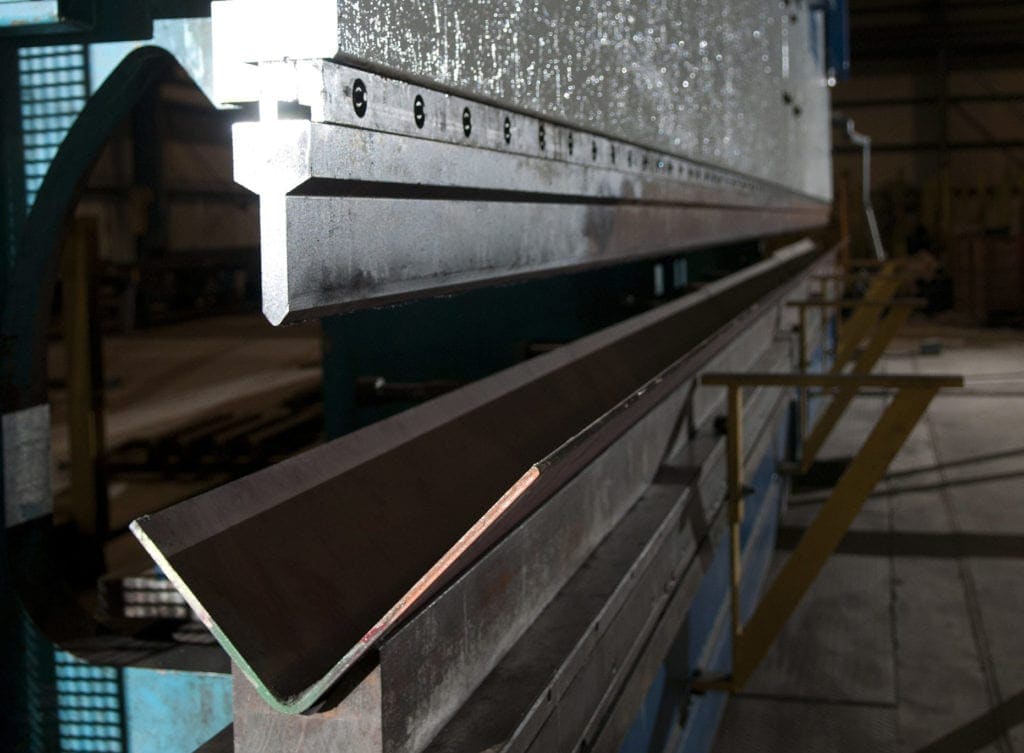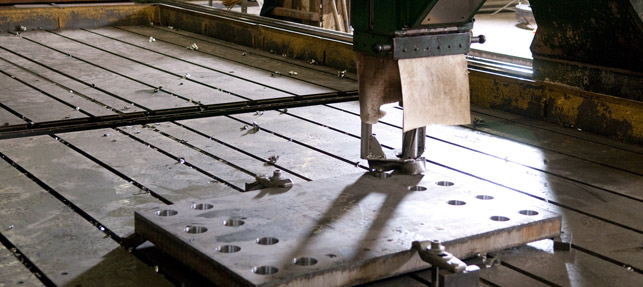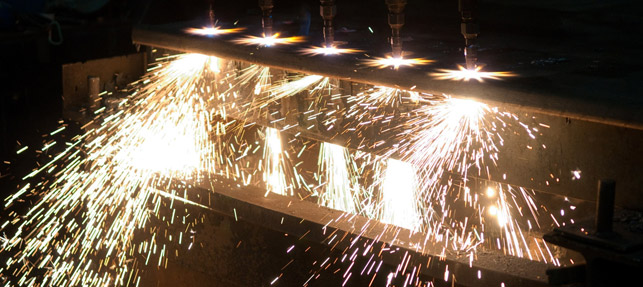 A wide variety of shape options further allow structural steel products to support building and design. The shape is integral for the correct distribution of load weights and pressures, with the proper selection ensuring that a building is durable and safe. Different shapes of structural steel each have unique mechanical and chemical properties that make them appropriate for different applications. These shapes include:
A wide variety of shape options further allow structural steel products to support building and design. The shape is integral for the correct distribution of load weights and pressures, with the proper selection ensuring that a building is durable and safe. Different shapes of structural steel each have unique mechanical and chemical properties that make them appropriate for different applications. These shapes include:
Structural steel is indispensable for numerous applications in the construction industry. In fact, this sector accounts for approximately half of global steel consumption. Structural steel, in particular, offers construction and other industries numerous advantages based on the steel’s material compositions and shape options. The combination of these factors can give structural steel various mechanical properties that are well suited to specific applications. As a leading structural steel service provider in the U.S., Infra-Metals Co. can assist you in finding the right carbon structural steel composition and shape to benefit your application.
Composition of Structural Steel
For reliable longevity and to bear extreme weight, structural steel must be of the right composition. Iron and carbon are two of the most vital components used by steel mills when making structural steel. The carbon lends strength to the iron ore, which is the source for the iron in steel and is quite soft on its own. To achieve load-bearing capacity, structural steel must have a higher carbon content by weight, and manufacturers can increase the amount of carbon according to the level of strength and ductility its application requires. Most construction purposes only have the need for low-carbon, or mild, structural steel, which contains between 0.04 and 0.30% carbon by weight. Medium- and high-carbon structural steel requires from 0.31 to 1.50% carbon by weight, making this steel suitable for mechanical engineering applications.
Structural steel can also contain levels of manganese, phosphorus, sulfur, and silicone, among other materials. While manufacturers can add additional metals such as chromium, titanium, and molybdenum to their steel compositions to achieve greater strength, this is typically best for non-structural steel as it can result in a brittle end-product.
Whatever the composition, manufacturers must test their structural steel for acceptable yield and tensile strengths. Part of what makes structural steel strong is its ability to yield under weight pressure without permanently changing shape. The point at which structural steel does irrevocably change shape is called its yield strength. Additional weight pressure will eventually bring the steel to its tensile strength limit, the point at which the steel actually breaks. Yield and tensile strength are measured in pounds per square inch (psi) and kilopounds per square inch (ksi).
For evaluating impact or energy absorption within structural steel, the Charpy impact test has standardized the process. Operators utilize a weighty hammer pendulum and a structural steel material sample to calculate how much energy that particular steel can absorb when the pendulum strikes it before the material reaches yield and tensile strength limits. The Charpy test can also incorporate temperature testing to mimic environmental temperature fluctuations.
Given the critical nature of construction applications, the American Society for Testing and Materials (ASTM) has over 12,000 regulatory standards categorizing steel grades and governing the material and its tolerances. These regulations provide a consistent standard across industries and guarantee that steel meeting ASTM requirements will be of the highest quality. Some of the approved structural steel grades include ASTM A36, ASTM A500, ASTM A572, and ASTM A588, with multiple shape options based on the application.
Structural Steel Shapes
- Angles. These perpendicular, L-shaped cross-sections, either with equal or unequal legs, are commonly found in corners of structures and other places to supplement main pillars and beams.
- Tubing. Hollow tubing made from hot-rolled steel coils and sold in round, square, and rectangular shapes is easily fabricated and welded according to need. It's a lightweight structural alternative to solid structural steel products.
- I-beams. These beams are one of the most common structural steel products for both beams and columns. The two parallel elements of the "I" or "H" cross-section are known as flanges, and the connecting element is known as the web.
- Wide flange beams. With a much longer web than in I-beams, the flanges of a wide flange beam are almost perpendicular to the web.
- Channels. Structural channels are hot-rolled into a C-shape, which, like I-beams, have a wider angle of attachment between the flanges and the web. They provide structural support in addition to a main load-bearing beam, most commonly for bracing or framing.
- Plates. Carbon-steel plates can withstand massive amounts of weight and pressure, making them perfect for ocean vessels. These are heavy-duty, wide surface areas of solid, continuous structural steel meant to span large areas.
- Bars. Short for merchant bars, these are hot-rolled and cold-finished carbon types of bars with different properties, dimensions, and shape sub-categories, such as round, square, and flat cross-sections.
Structural Steel Benefits
Structural steel is an extremely efficient and effective material for building applications. It lends the sector many advantages, as stainless steel is:
- Cost-effective. In addition to being economical in terms of the initial material investment, structural steel can often generate cost reductions in other areas, such as fewer material needs due to steel's robust strength, faster construction timelines, lower waste production, recyclability, and more.
- Safe. The strength of structural steel is a defining feature, but it also has other characteristics that lend it to safe functionality. Steel is resistant to corrosion, rust, mold, flames, and thermal conditions. It also doesn't splinter as some other materials would should a steel structure shift.
- Adaptable for growth. As manufacturers specifically engineer structural steel for its strength and weight-bearing capabilities, should a builder need or want to construct an addition on a property, the steel frame can often accommodate the change.
- Reliable. ASTM regulations ensure that structural steel meets quality standards that are consistent across industries so that purchasers know what they're getting when they buy this steel. This gives builders peace of mind that the product is safe for its intended use.
- Versatile. Structural steel's comparatively light weight and strength allow for more unique or complex construction designs and architectural features than construction materials like wood.
- Efficient. When manufacturers combine structural steel production with computer technology that can generate models and incorporate the supply chain, these technological advancements can help pinpoint areas for cost savings, design improvements, and safety considerations.
- Environmentally friendly. Steel is a recyclable metal that retains its strength regardless of how many recycling cycles it encounters. This capability also decreases scrap waste. With America's bounty of iron mining resources, such as in Minnesota, domestic steel production can be a sustainable industry.
Structural Steel for Renewable Energy Infrastructure
Diverse energy sectors from electric to nuclear power have long relied on structural steel in equipment manufacturing for its resistance properties in applications such as pipelines, pylons, and gas wells. Now, the renewable energy industry is making use of it as well.
The fast-growing solar industry is applying structural steel to infrastructure in the form of solar panel mounts to keep panels secure under all weather conditions. Wind energy also depends on structural steel, requiring it for turbines and transmission lines spanning great distances. Further, offshore renewable energy depends on marine applications of structural steel to create steel plates that support offshore wind turbines, the boats needed to build the infrastructure, and transmission-line equipment. Structural steel even touches on EV battery creation with uses in the manufacturing facility’s infrastructure and assembly-line equipment.
Structural Steel From Infra-Metals
Knowledgeable distributors ensure that the structural steel they sell is reliably strong and meets exacting standards for composition, durability testing, and tolerance dimensions to support a range of industries. Since 1990, Infra-Metals has offered a wide selection of products and services to meet all of your structural carbon steel requirements. In our inventory, we carry steel beams, sheets, tubes, channels, and more, also offering drilling, saw cutting, forming, and other value-added services to be a one-stop facility for our customers. Our team is fully committed to quality work along with efficiency, timely delivery, and competitive pricing.
Contact Infra-Metals today for more information on our comprehensive structural steel products and capabilities, or request a quote to begin your project.



